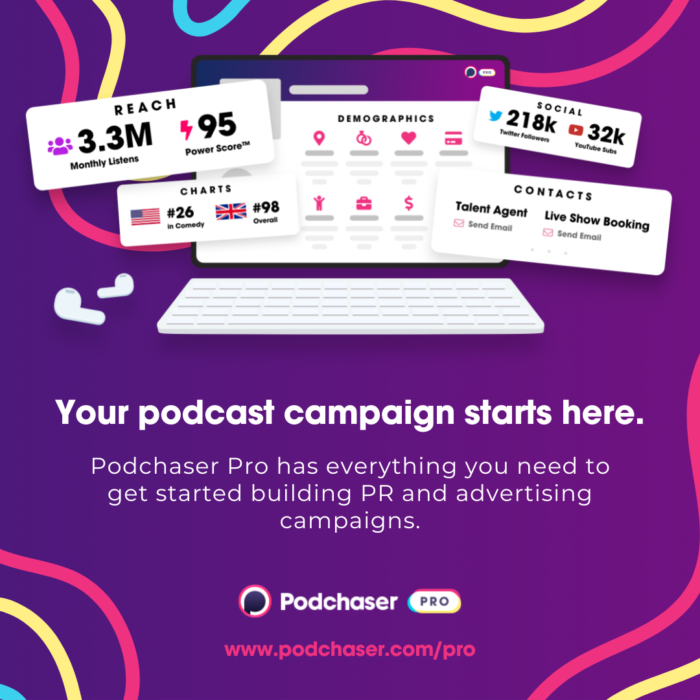How Brands Can Gain Confidence in Podcast Advertising
Brands considering podcast advertising often have questions and concerns about Return on Ad Spend (ROAS). Some of these include:
Measurement and Attribution:
- How can we accurately measure the impact of our podcast ads?
- What tools or methodologies are available for tracking podcast ad performance?
- How do we attribute sales or conversions to podcast ads?
Audience Targeting:
- How can we ensure that our ads reach our target audience?
- What data is available on podcast audiences to help with targeting?
- Are there specific podcasts or categories that perform better for our target demographics?
Integration with Overall Marketing Strategy:
- How does podcast advertising fit into our overall marketing mix?
- Can we integrate podcast ads with other marketing efforts (e.g., social media, email campaigns)?
- How can we leverage podcast ads to complement our other advertising channels?
Many brands have questions and concerns about the Return on Ad Spend (ROAS) from podcast ads, especially when compared to more familiar channels like Google Ads and Meta (Facebook/Instagram) Ads. This article will address these concerns and provide strategies to build confidence in podcast advertising.
How Brands Can Gain Confidence in Podcast Advertising
Understanding Measurement and Attribution in Podcast Advertising
One of the primary concerns brands have is accurately measuring the impact of their podcast ads. To build confidence in ROAS:
Utilize Advanced Tracking Tools:
Tools such as Podscribe (pixel-based) and Fairing (post purchase survey) offer detailed analytics and help attribute conversions to specific podcast campaigns. Podscribe provides transparency similar to Google Analytics and Facebook Pixel. Whereas Fairing gives advertisers greater qualitative insights into podcast ad campaign effectiveness.
Review Case Studies and Success Stories:
Analyzing case studies from brands that have successfully used podcast advertising can set realistic benchmarks. This is similar to leveraging the wealth of case studies available for Google and Meta ads. Here’s a great primer on podcast ad campaign case studies.
Effective Audience Targeting
Ensuring that ads reach the target audience is crucial. But that’s been a challenge, historically.
Leverage Audience Insights:
Platforms like Podchaser Pro offer detailed demographics and interests, enhancing targeting precision. This mirrors the granular targeting options in Google and Meta ads.
Podchaser Pro offers the following audience filters:
- Age
- Gender
- Parental Status
- Household Income
- Listener Location
- Ethnicity
- Interests
- Jobs
Partner with Established Networks
Collaborate with podcast networks with defined audience segments and proven reach, akin to choosing specific ad placements on Google and Meta.
Integrating Podcast Ads with Overall Marketing Strategy
A cohesive marketing strategy enhances impact:
Holistic Campaigns:
Integrate podcast advertising with other marketing efforts, such as social media and email campaigns. This mirrors the integration of Google and Meta ads with other channels.
Many podcast networks offer bundled ad buys that activate not just audio, but social media, newsletter, and/or video (YouTube) properties as well.
You might’ve seen a YouTube Short, Instagram Reel, or TikTok video that features the podcast host endorsing a product or service. Often times, this was part of an aforementioned bundled buy. The advertiser benefits from the multimedia integration.
Integrated Paid and Earned Campaigns:
This campaign strategy typically features host-read endorsements, an interview with the advertiser’s founder, and additional audio ad reads. We broke down how (and why) the integrated paid + earned podcast campaign works here: The Bookend Campaign strategy.
Conclusion
By addressing common questions and concerns with specific strategies, brands can build greater confidence in podcast advertising and maximize their ROAS. Leveraging the similarities with familiar advertising channels like Google Ads and Meta Ads can provide a framework for understanding and optimizing podcast ad campaigns.
For brands looking to expand their advertising efforts, podcast ads offer a unique and effective medium to engage with audiences. With the right tools, strategies, and transparency, podcast advertising can be a powerful addition to your marketing mix. So by now you should know how brands can gain confidence in podcast advertising.
Additional Resources:
Unlock more with Podchaser Pro
- Audience Insights
- Contact Information
- Demographics
- Charts
- Sponsor History
- and More!
- Account
- Register
- Log In
- Find Friends
- Resources
- Help Center
- Blog
- API
Podchaser is the ultimate destination for podcast data, search, and discovery. Learn More
- © 2024 Podchaser, Inc.
- Privacy Policy
- Terms of Service
- Contact Us

